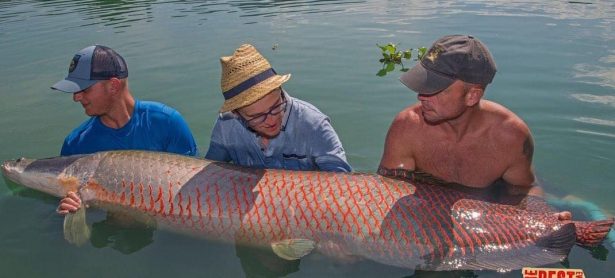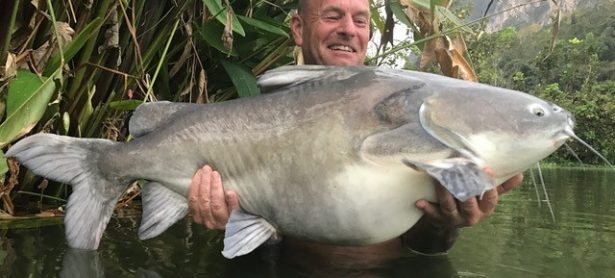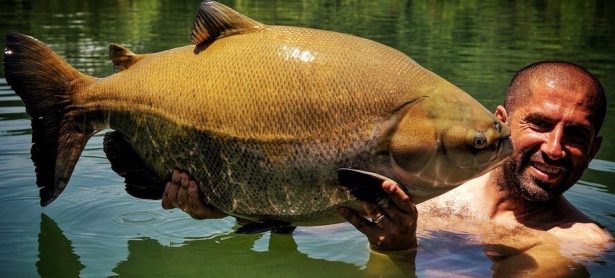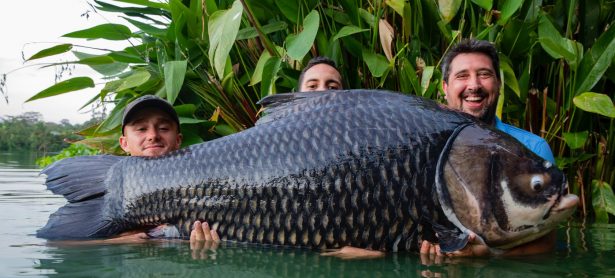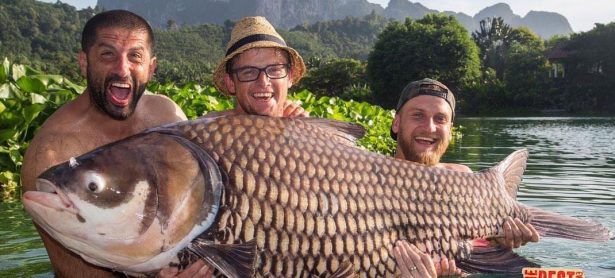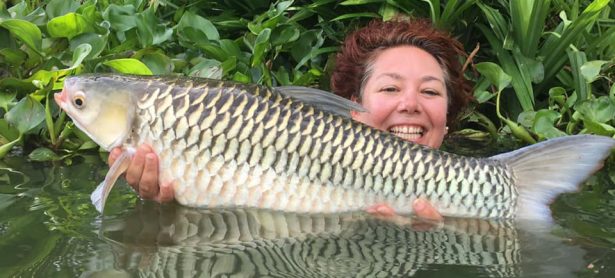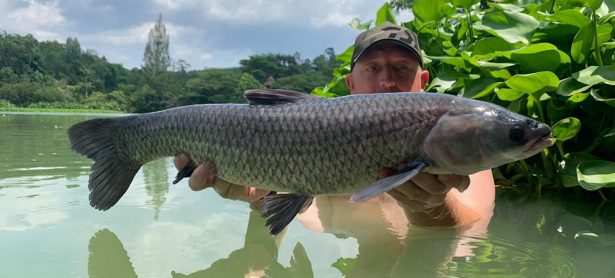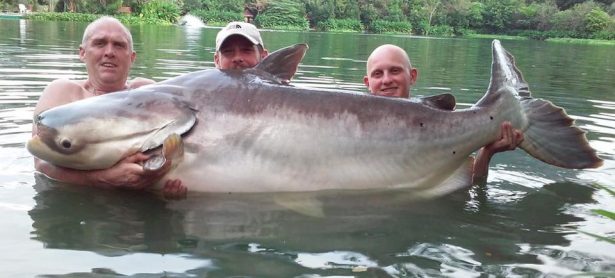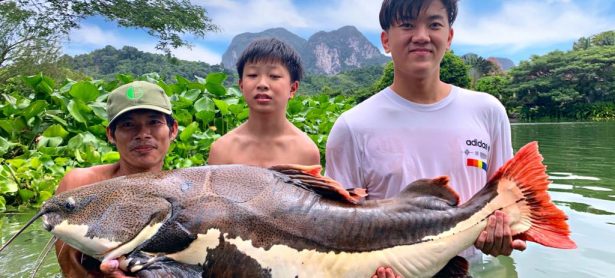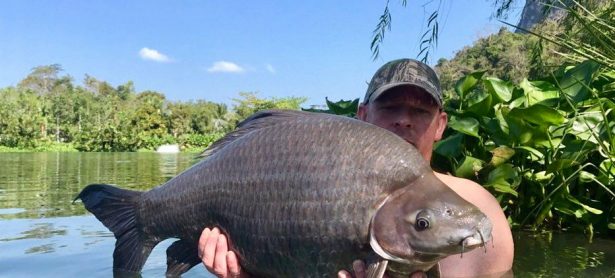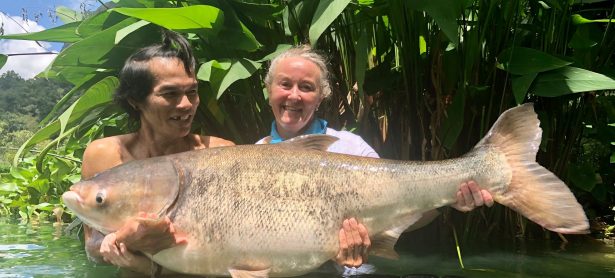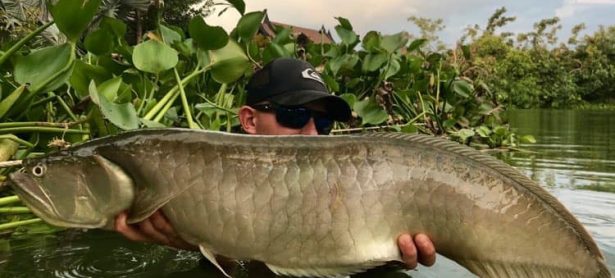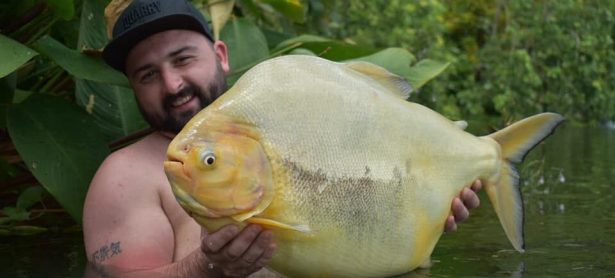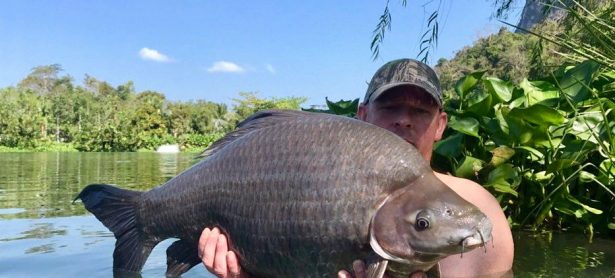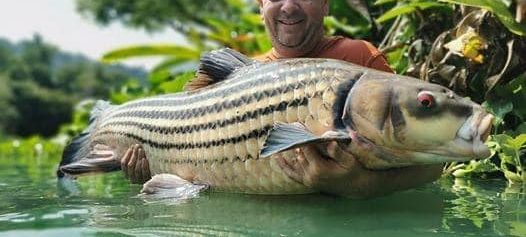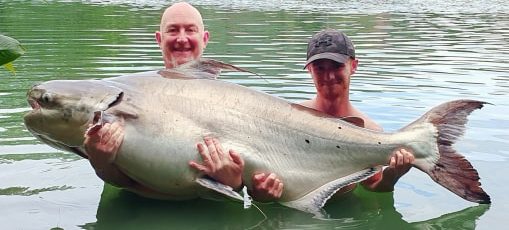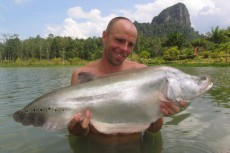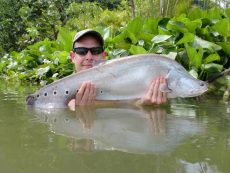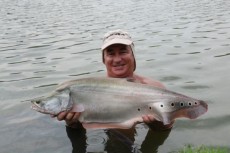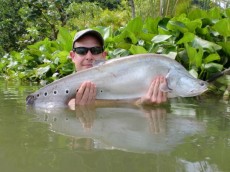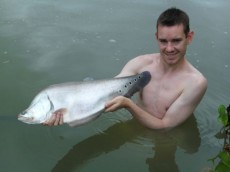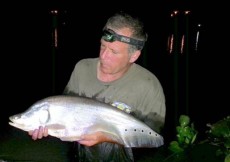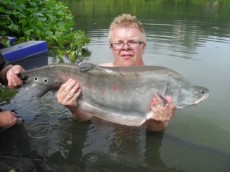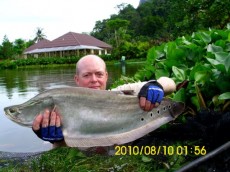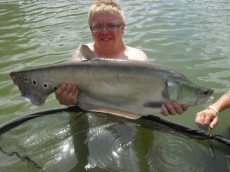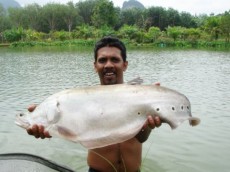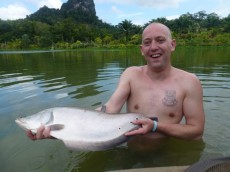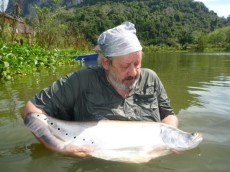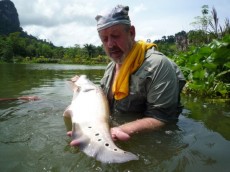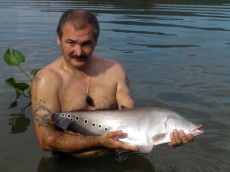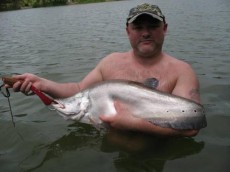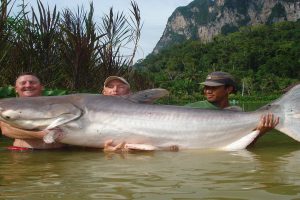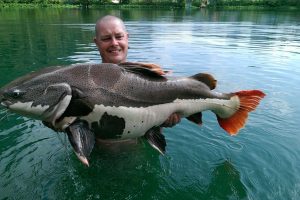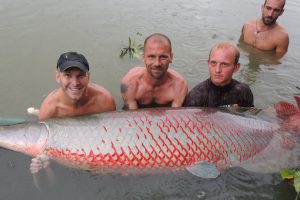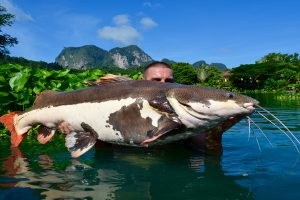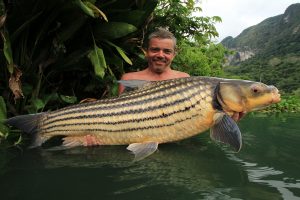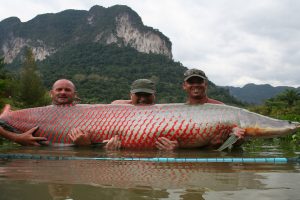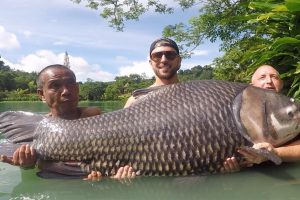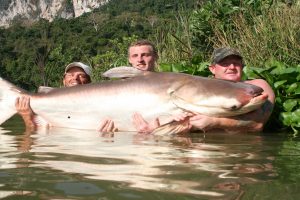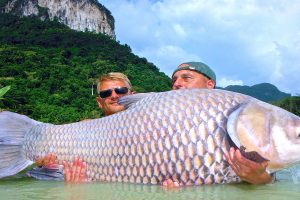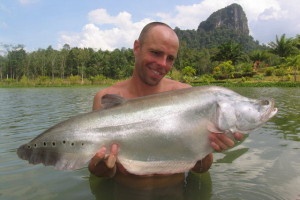 Name: Spotted featherback.
Name: Spotted featherback.
Species: Chitala ornata.
Thai name: Pla klaey.
Max length: 1m.
Max weight: 12kg.
IGFA record: 6kg.
Diet: Small fish, shrimp, worms, crustaceans, and insects.
To fish for our spotted featherbacks worms and live shrimp are the top baits. They feed best during and straight after rain especially during the first two hours of dark. Fish on top of the plateaus in the shallower end of the lake. They are cautious feeders and will drop a bait if they feel any resistance, so use a light lead on a stem leading to a small float attached to a run ring. Use a cork ball or small polyball as your buffer bead, and set the indicators at their lightest setting with plenty of slack line to the rig. Takes will be slow, jerky short pulls, which can go on for a few minutes, but wait until the featherback takes of on a slow, deliberate run.
On the strike be ready for the featherback to make a fast jump and back flip as they try to shed the hook, but unlike other jumping fish, keep the line tight when they jump. As the featherback approaches the landing net they will jump again, so stick to the same tactics as before. As soon as the fish is in the net you will have seconds to take a quick picture. We have learnt with these fish that they will not tolerate being handled or restrained in a net, so for this reason you should have your camera ready and hold the fish up for a very quick photo. When our guides tell you enough, stop and release the fish for someone else to enjoy.
General facts on the spotted featherback:
Spotted featherbacks are also known as knifefish or clown knifefish due to their long, knife-like bodies. Featherbacks are usually are found in lakes, swamps, and river backwaters. They prefer still waters and can survive with low oxygen. They prefer low light levels, and mainly these fish are nocturnal, usually cruising during the twilight hours. They hunt live prey and will try any fish that fits into their mouths. Young featherbacks usually school near logs and plants for security, whereas more mature specimens become territorial and eventually become loners. These fish can also breathe air to survive in stagnant waters with low oxygen. Featherbacks are a very distinct silvery grey with a long, knife-like body with a long anal fin.
Mature fish normally have 5-10 (or even more) black spots ringed with white that usually increase in number and size as the fish grows. Juvenile fish have striped bands instead of spots. Their long anal fins enable them to make graceful forward and backward movements. They have two nasal tentacles above their large toothed mouth. In the center of the body there is a flag-like dorsal fin, but they have no ventral fins. Most featherbacks are afflicted with cloudy eye colour when they age, but this is perfectly normal. Featherbacks come from Southeast Asia, specifically Thailand, Borneo, Malaysia, India, and Sumatra. Featherbacks spawn at the start of the rainy season end of May to June in flooded grassy areas. In our lake they spawn once we have three days of continual rain, usually in June, when they take refuge in the water hyacinths in the top bay. Spawning is at night over a three-day period.



